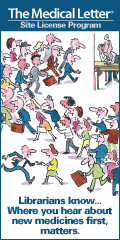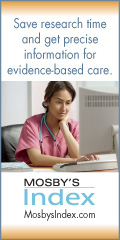

History of the Association
MLA Milestones
1879 |
National Library of Medicine (NLM) Milestone: First issue of Index Medicus produced. |
1898 |
The Medical Library Association (MLA) is founded as the Association of Medical Librarians on May 2, 1898, by four librarians and four physicians in the office of the Philadelphia Medical Journal at the invitation of George M. Gould, M.D., editor of the journal. The object of the association was the fostering of medical libraries and the maintenance of an exchange of medical literature among its members. Membership was limited to librarians representing medical libraries of not less than 500 volumes and with regular library hours and attendance. |
1899 |
The association's Exchange is established in Philadelphia, PA. Some 300 volumes were exchanged between libraries during the first year. |
1907 |
The name of the association is changed to the Medical Library Association. |
1911 |
MLA begins publishing its own journal, the Bulletin of the Medical Library Association. Three earlier titles contained association news: Medical Libraries, the Bulletin of the Association of Medical Librarians, and the Medical Library and Historical Journal. |
1917 |
Medical libraries responded to the war effort: made military medicine resources available to military officials and bases, stopped providing complimentary issues to save paper, and following the war worked to obtain overseas journals not distributed during the war. |
1925 |
Medical libraries gave duplicate journal issues and provided subscriptions to aid German libraries. At the same time, librarians were greatly concerned by the cost of German periodicals. |
1929 |
The bylaws are revised and significant changes in the organization and infrastructure are established. Members are reclassified into three classes: library members, supporting members, and professional members. Membership of libraries is broadened to include dental, veterinary, biological, and related libraries. A Nominating Committee is established; voting by mail is established; standing committees are established; location of the annual meeting is determined by the association instead of the Executive Committee. |
1933 |
Marcia C. Noyes, charter member of the association, is the first woman and the first non-physician to be elected president of MLA. |
1934 |
The association is incorporated in Maryland.MLA joins the International Federation of Library Associations. The association agrees to pay .05 per member for all classes of membership for IFLA dues. |
1941-45 |
Medical libraries once again support the war effort. The librarians opened their libraries to provide service to all medical officers and hospitals, sent books and other materials to military camps, and extended hours of operation to serve the military. Many libraries in major cities moved valuable books to safer locations.Medical libraries and librarians supported the work of libraries in Europe and shared duplicate subscriptions. |
1943 |
The first medical library manual entitled A Handbook of Medical Library Practice is published by the American Library Association.NLM Milestone: Survey of the Army Medical Library was undertaken by a six-librarian team (including Janet Doe and Mary Louise Marshall of MLA) to recommend ways to reinvigorate the library after years of inadequate funding and loss of trained staff. The team's report recommended a new building, a career librarian to administer essential library functions, increased funding, etc. |
1945 |
The association hires its first salaried employee, Mildred V. Naylor, as manager of the Exchange. |
1946 |
The constitution is amended to provide for a physician as honorary vice-president with the office of the president and all other offices to be held by professional librarians in active work. The qualifications of professional membership are changed, and an Exchange Committee and Finance Committee are established.Mary Louise Marshall issues a call for the training and certification of medical librarians to fill the need for more professionals in the profession. |
1947 |
The International Cooperation Committee received the first of several three-year grants from the Rockefeller Foundation to finance fellowships for medical librarians outside North America to travel to the United States. |
1948 |
The first training program for medical librarianship is offered at Columbia University.Regional groups are established and subject groups begin meeting.First survey on employment and salary standards are published.NLM Milestone: First edition of The Army Medical Library Classification. |
1949 |
The association adopts a Code of Training and Certification of Medical Librarians, its first certification program.The first award to recognize the contributions of members to the profession—the Marcia C. Noyes Award—is presented to Eileen R. Cunningham. |
1950 |
The MLA membership directory is published as a separate publication for the first time. |
1952 |
The association published a book series with the Development of Medical Bibliography by Estelle Brodman as the first title.The association begins publishing Vital Notes on Medical Periodicals, which provides new information on medical and related journals. |
1956 |
The first Murray Gottlieb Prize Essay Award for an essay on American medical history is presented to Dorothy Long.NLM Milestone: Armed Forces Medical Library becomes National Library of Medicine as a result of legislation sponsored by Senators Lister Hill and John F. Kennedy. |
1958 |
Formal continuing education courses are offered for the first time at the annual meeting in Rochester, MN. Twelve courses are presented. |
1961 |
The association established a central office with Helen Brown Schmidt appointed as executive secretary.The association published the MLA News as the vehicle for disseminating association news more frequently than in the quarterly Bulletin. |
1963 |
The 62nd MLA Annual Meeting is held in conjunction with the Second International Congress on Medical Librarianship (ICML) in Washington, DC. Purposes of the ICML were to exchange information on the art and science of librarianship, to advance the state of the art and strengthen its techniques, and to improve the quality of the service which medical librarianship contributes to the advancement of medicine. |
1964 |
MEDLARS is implemented by the National Library of Medicine with the first automated printing of Index Medicus. |
1965 |
MLA supports passage of the Medical
Library Assistance Act (MLAA). Under the administration of the National
Library of Medicine, MLAA brings about unprecedented growth and
development of medical library services, including:
|
1967 |
The first Janet Doe Lecture on the History of Philosophy of Medical Librarianship is presented by Gertrude L. Annan.NLM Milestone: Regional Medical Library Program begins. |
1968 |
The advent of online searching is instituted with the nine libraries accessing the SUNY Biomedical Communication Network Index Medicus database. |
1971 |
The Clinical Medical Librarian Program is instituted.NLM Milestone: MEDLINE becomes operational. |
1972 |
The association hires its first full-time executive director.NLM Milestone: Toxline becomes operational. |
1979 |
MLA sends delegates to the White House Conference on Library and Information Services. |
1982 |
The Matheson/Cooper report, Academic Information in the Health Sciences Center: Roles for the Library in Information Management, is published. The resulting IAIMS grant program brings about profound changes in the way libraries organize information services within their institutions. |
1983 |
The MLA Board of Directors begins to use electronic mail for communicating. |
1985 |
Increased emphasis on legislative and advocacy issues is realized with the establishment of the Joint MLA/AAHSL Legislative Task Force. |
1986 |
NLM Milestone: Grateful Med is introduced. |
1987 |
Challenge to Action: Planning and Evaluation Guidelines for Academic Health Sciences Libraries is published.MLA develops a strategic plan, Shaping the Future. |
1988 |
A new credentialing program, the Academy of Health Information Professionals is established. |
1991 |
MLA participates in the second White House Conference on Library and Information Services.MLA supports passage of the High-Performance Computing and Communications (HPCC) Act to facilitate development of a high-speed national computer telecommunications network.National Coordination Office for the HPCC Program is established at NLM which funds grants to connect educational institutions and local hospitals to NLM's databases.MLA participates in Joint Commission on Accreditation of Healthcare Organizations (JCAHO) Information Management Task Force which is charged to develop new standards on hospital information management, including library services. |
1992 |
Platform for Change, MLA's educational policy statement, is published. The focus is on the individual's responsibility for his/her own lifelong learning. |
1994 |
MLA adopts a code of ethics for professional practice.The first volume, Reference and Information Services in Health Sciences Libraries, of the eight-volume series Current Practice in Health Sciences Libraries, is published. This series is the successor to the four editions of the Handbook of Medical Library Practice. |
1995 |
MLA is joint sponsor of the 7th International Congress on Medical Librarianship held in conjunction with its annual meeting in Washington, DC.MLA participates on the Education and Training Panel convened by the National Library of Medicine that results in grants to study the future education and training needs of health sciences librarians.MLA adopts a research platform entitled Using Scientific Evidence to Improve Information Practice. MLA mounts its MLANET on the World Wide Web. |
1996 |
NLM Milestone: Grateful Med available to search MEDLINE and other databases.Bulletin of the Medical Library Association (BMLA) launches electronic table of contents on MLANET. |
1997 |
NLM Milestone: Free web access to MEDLINE via PUBMed and Internet Grateful Med is announced by Vice President Albert J. Gore.MLA supports the provision of MEDLINE free to the public. |
1998 |
MLA's 100th anniversary celebration. |
2000 |
MLA commissions the Hay Group to conduct a study about how organizations compensate medical library professionals performing information technology oriented roles, and how that compensation compares to IT professionals. Summary information is available in the MLANET members-only area. |
Medical Library Association
312.419.9094
info@mlahq.org
© 1999-2008 Medical Library Association
Send site questions/comments to systems administrator
Last Updated: 2008 August 19
www.mlanet.org/about/history/milestones.html





